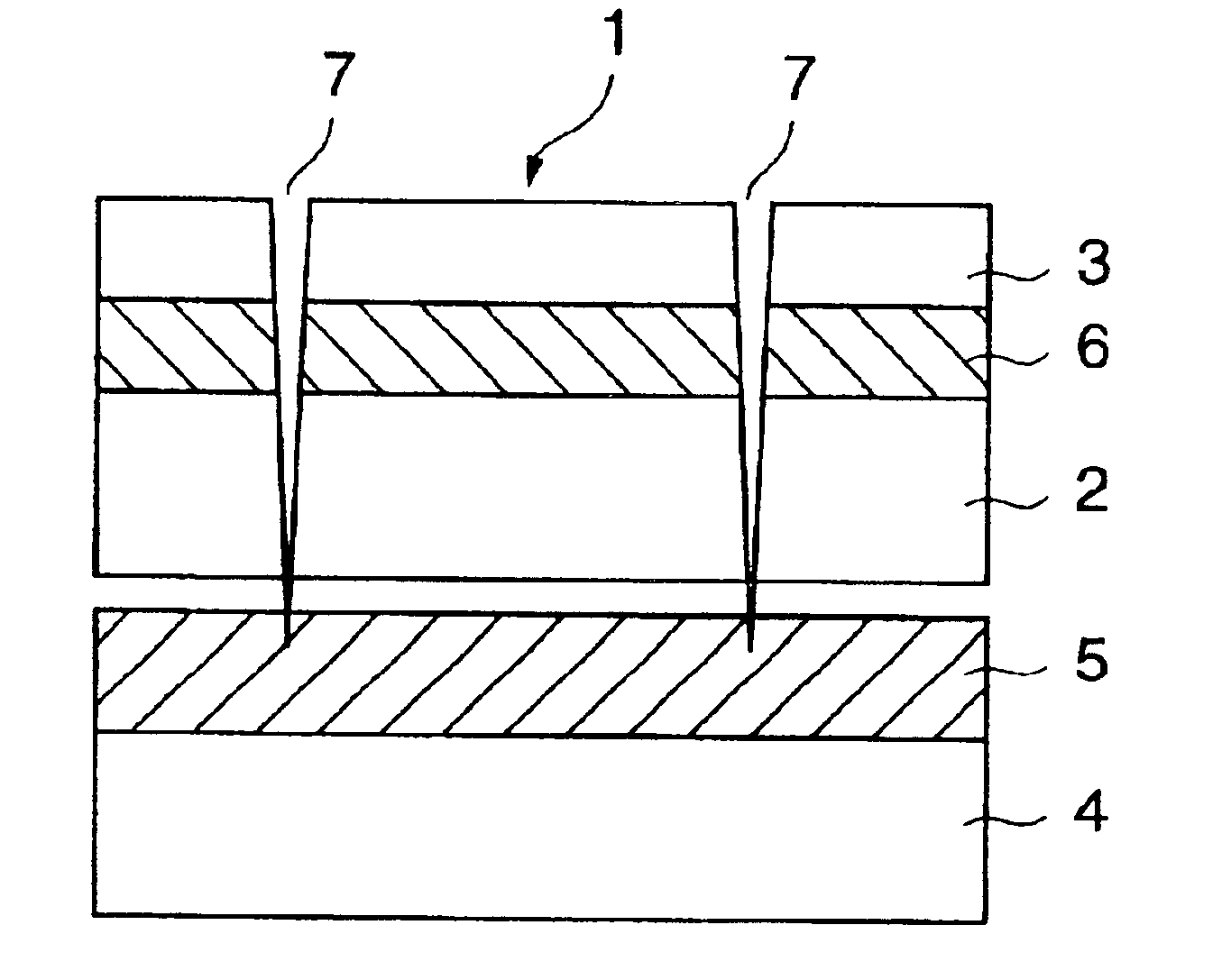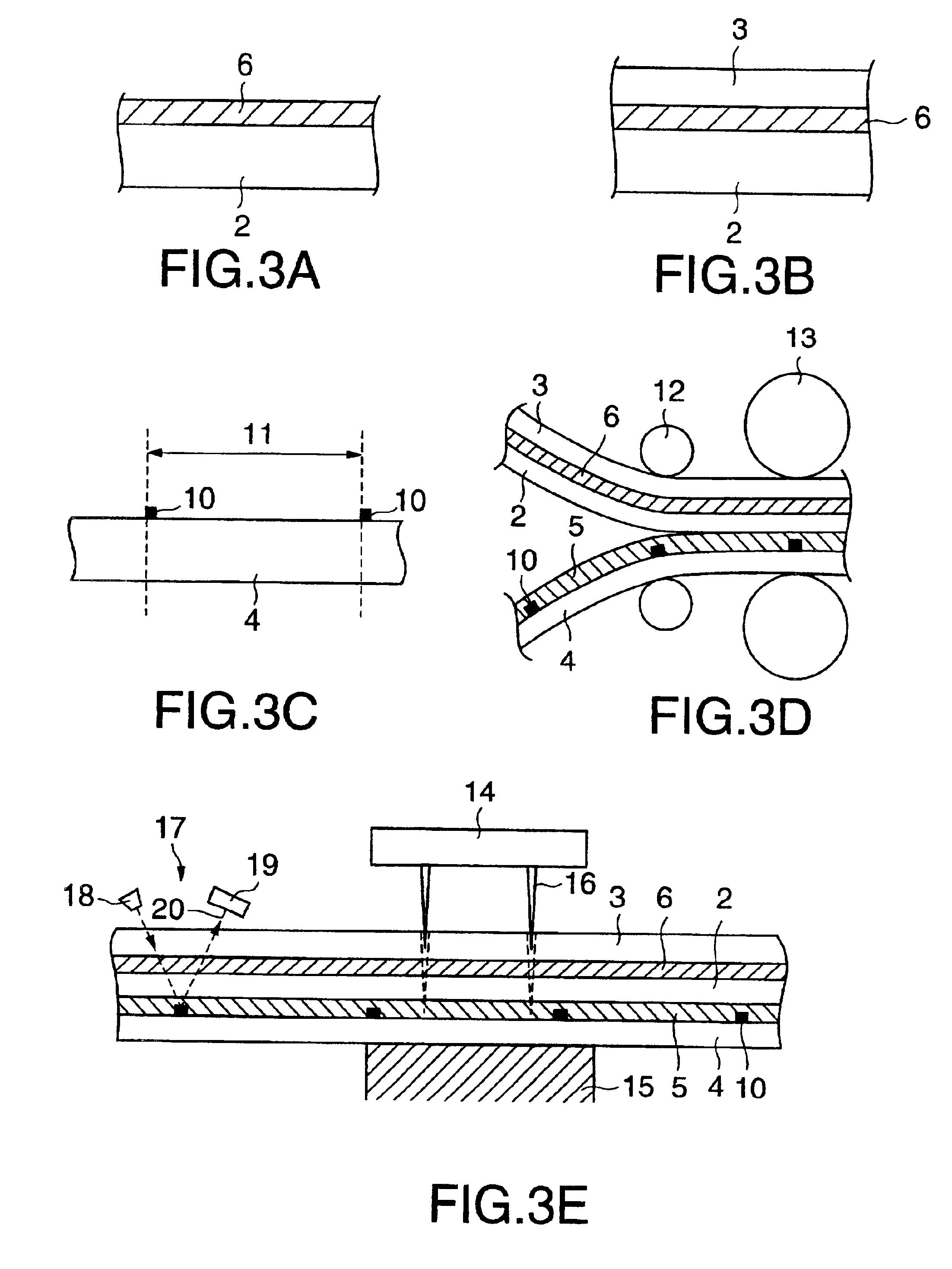Intermediate transfer recording medium and process for producing the same
a technology of intermediate transfer and recording medium, which is applied in the field of can solve the problems of inability to impart satisfactory fastness properties, such as scratch resistance and chemical resistance, to the protective layer formed on the intermediate transfer recording medium, and disadvantageous fastness properties of images, etc., and achieves excellent fastness properties, high accuracy, and simple manner
- Summary
- Abstract
- Description
- Claims
- Application Information
AI Technical Summary
Benefits of technology
Problems solved by technology
Method used
Image
Examples
example 1
[0080]The following coating liquid for a hologram layer was first coated on a 25 μm-thick polyethylene terephthalate film (Lumirror, manufactured by Toray Industries, Inc.) as a transparent sheet, and the coating was dried to form a hologram layer at a coverage of 2.0 g / m2 on a dry basis. A hologram pattern was formed in the hologram layer by forming fine concaves and convexes by embossing using an original plate having a concave-convex pattern of interference fringes of a hologram.
[0081]
(Coating liquid for hologram layer)Acrylic resin40 partsMelamine resin10 partsCyclohexane50 partsMethyl ethyl ketone50 parts
[0082]Further, a 500 angstrom-thick titanium oxide layer was formed as a transparent deposit by vacuum deposition on the hologram layer with the hologram pattern formed thereon. Thus, a hologram formation layer composed of the hologram layer and the transparent deposit was formed. The following coating liquid for a receptive layer was coated on the hologram formation layer, and...
example 2
[0088]A hologram formation layer and a receptive layer were provided on a transparent sheet in the same manner as in Example 1. Separately, a 38 μm-thick polyethylene terephthalate film (Lumirror, manufactured by Toray Industries, Inc.) was provided as a sheet substrate. A resin of low density polyethylene (LDPE) with 15% of titanium oxide being dispersed therein was extrusion coated on the sheet substrate to a thickness of 40 μm. Simultaneously with the extrusion, the transparent sheet with the receptive layer formed thereon was EC laminated onto the sheet substrate with the resin layer formed thereon so that the transparent sheet on its side remote from the receptive layer faced the LDPE layer provided on the sheet substrate. In this case, however, as shown in FIG. 3 (4), register marks were previously printed by register mark ink as used in Example 1 on the sheet substrate in its side where the LDPE layer was to be formed.
[0089]Further, in the laminate thus obtained, as shown in ...
PUM
| Property | Measurement | Unit |
|---|---|---|
| thickness | aaaaa | aaaaa |
| length | aaaaa | aaaaa |
| length | aaaaa | aaaaa |
Abstract
Description
Claims
Application Information
 Login to View More
Login to View More - R&D
- Intellectual Property
- Life Sciences
- Materials
- Tech Scout
- Unparalleled Data Quality
- Higher Quality Content
- 60% Fewer Hallucinations
Browse by: Latest US Patents, China's latest patents, Technical Efficacy Thesaurus, Application Domain, Technology Topic, Popular Technical Reports.
© 2025 PatSnap. All rights reserved.Legal|Privacy policy|Modern Slavery Act Transparency Statement|Sitemap|About US| Contact US: help@patsnap.com



